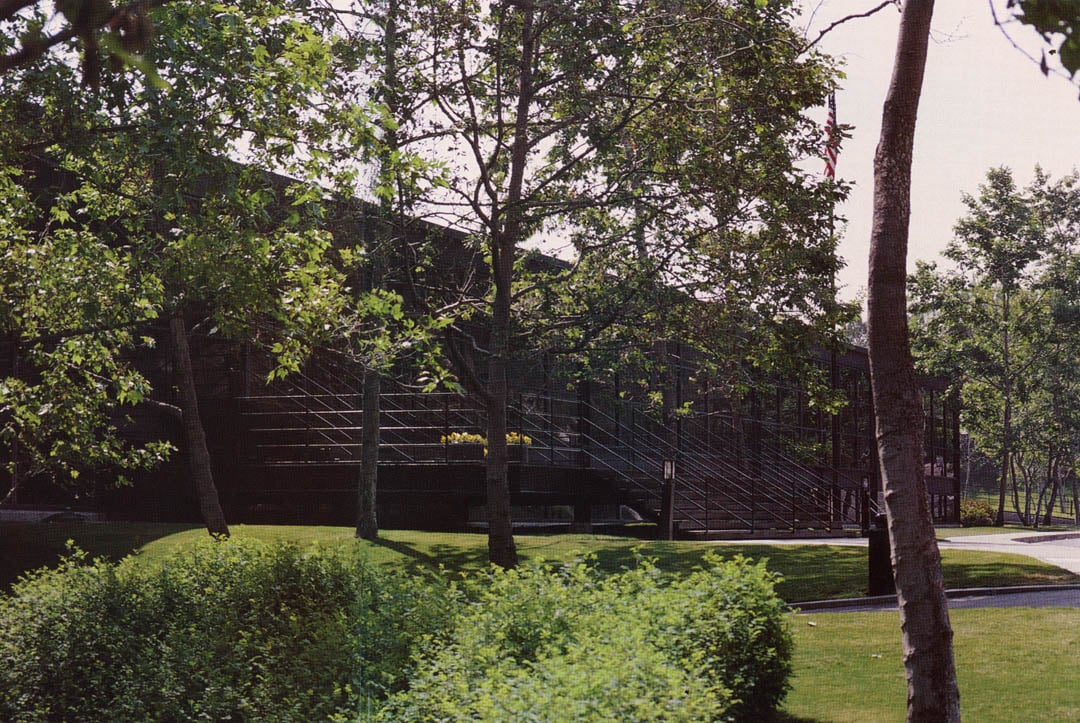

Contributor

True wit is nature to advantage dressed.
Pope, An Essay on Criticism
In developing plans for the new Art Center College of Design in Pasadena, California, architects Alfred Caldwell and Craig Ellwood and landscape architect Erik Katzmaier did not take long to agree that the landscape should emphasize California native plants. Caldwell, who once worked for Jens Jensen, designer of the famed Chicago park system, is finely attuned to the beauty of the natural environment and has made use of local native plants in his architectural endeavors elsewhere. Katzmaier also has a firm commitment to the use of native plants.
Several aspects of the project itself also pointed in this direction. The site included about one hundred acres of brush- and tree-covered hillside, only thirty-three acres of which were to be developed. A landscape of native plants would blend well with the rest of the site, which was to be left in a natural state. The design team also saw an aesthetic compatibility between the strong lines of the buildings and the character of the native vegetation, particularly the sycamores, live oaks, and alders. In addition, maintenance costs, always a consideration, would be kept to a minimum. The designers had little difficulty in persuading the school’s administrators that native plants were the right choice.
Construction of the facility and its grounds proceeded simultaneously. As the plot was mainly hillside bisected by a canyon, the entire thirty-three-acre site had to be graded. First the upper portion of the future campus was bulldozed away and the lower portion was filled in. While the building foundations were laid and walls erected, irrigation lines were installed and hydromulching begun. This entailed the spraying of a mixture of water, wood cellulose fiber, fertilizer, and seed — mainly fescue, alyssum, and California poppy — largely for erosion control on the bare and newly filled slopes.
Permanent planting began shortly after the campus took form. A number of considerations had to be kept in mind: slope, exposure, drainage patterns, soil types, and aesthetic appeal. Seven kinds of ecological site were recognized, and appropriate plants were recommended for each.
North-facing slopes of decomposed granite fill allowed the team to consider coast live oak (Quercus agrifolia), California bay (Umbellularia californica), fuchsia-flowering gooseberry (Ribes speciosum), white alder (Alnus rhombifolia), toyon (Heteromeles arbutifolia), and several cultivars of ceanothus, including ‘Julia Phelps’ and ‘Concha’. Red fescue (Festuca rubra) was suggested as ground cover.
Continually shaded hillside under the bridge between two buildings suggested the inclusion of moisture-loving plants such as spice-bush (Calycanthus occidentalis), giant chain fern (Woodwardia fimbriata), Catalina evergreen currant (Ribes viburnifolium), coffeeberry (Rhamnus californica), and two non-natives, sword fern and English ivy.
Moist and often shady areas in the canyon below the building could support such plants as white alder, ceanothus, southern California walnut (Juglans californica), California bay, Fremont cottonwood (Populus fremontii), California buckeye (Aesculus californica), and California wild rose (Rosa californica).
In open meadow on the top of the mesa plans called for tall fescue (Festuca elatior) and wildflowers such as California poppy (Eschscholzia californica), Douglas lupine (Lupinus nanus), azure penstemon (Penstemon azureus), and monkeyflower (Mimulus) hybrids. This flat area was surrounded by alders and sycamores.
Dry, south-facing slopes were held to be hospitable to such drought-tolerant plants as black sage (Salvia mellifera), California sagebrush (Artemisia californica), sugar bush (Rhus ovata), coyote brush (Baccharis pilularis ‘Twin Peaks’), fuchsia-flowering gooseberry, flannel-bush (Fremontodendron californicum), and laurel sumac (Rhus laurina).
East-facing bedrock hillsides remaining from grading were the driest areas on the site, as water-retaining soil was practically nonexistent. The decision was made to let poison oak and California buckwheat (Eriogonum) remain the dominant plants.
On slopes surrounding the buildings a more traditional ground cover of Bermuda grass was suggested because of the heavy foot traffic anticipated.
Water requirements range from no supplemental irrigation to almost riparian conditions in the moister areas, but the entire site is irrigated in response to both the request of the fire department and the terms of the insurance policy. A drip irrigation system was tried in some areas, but it proved impractical, in part because coyotes nibbled off the emitters and exposed plastic pipes. Irrigation now is done entirely by impact sprinklers, with intervals determined by the needs of plants in the groupings. Dry, east-facing slopes, for example, receive little summer water, while grassy meadows and turf are watered every three or four days in the dry season.
Maintenance is now confined mostly to the five or six acres surrounding the buildings. Mowing and pruning is done several days a week by contract gardeners under the supervision of the grounds staff. Sycamore blight and other pests are controlled by spraying. Because the campus is surrounded by chaparral and native woodland, neighboring wildlife can pose problems. The most serious damage was caused by deer, particularly when the plants were young.
Most of the plants came from the nonprofit Theodore Payne Foundation, which maintains a nursery of native plants in nearby Sun Valley. The seedlings were only two to three inches high when they were installed, and all were in biodegradable containers that were put out by students over a period of three years, primarily in the cooler months. When questioned about the project, Mr Katzmeier says “It was a chance to show people what our native plants could do. We needed to control erosion, but we had to have impressive plant growth in strategic places. The college hosts many functions, and it is seen by heads of industry who come to view the work of the students. The plants create a serene, inviting, natural environment and a striking setting for the college buildings. And the administration loves the water bill.”








Responses